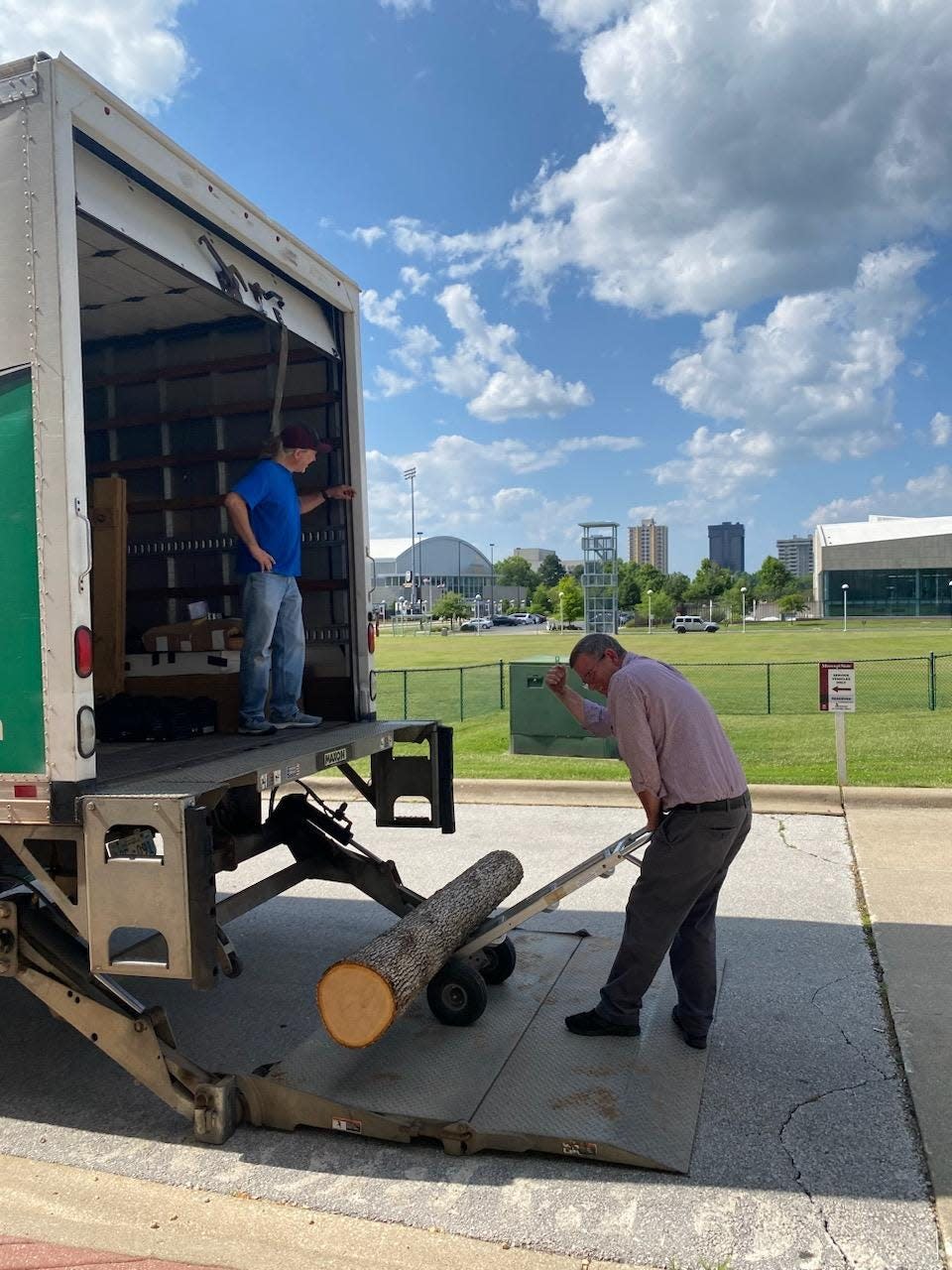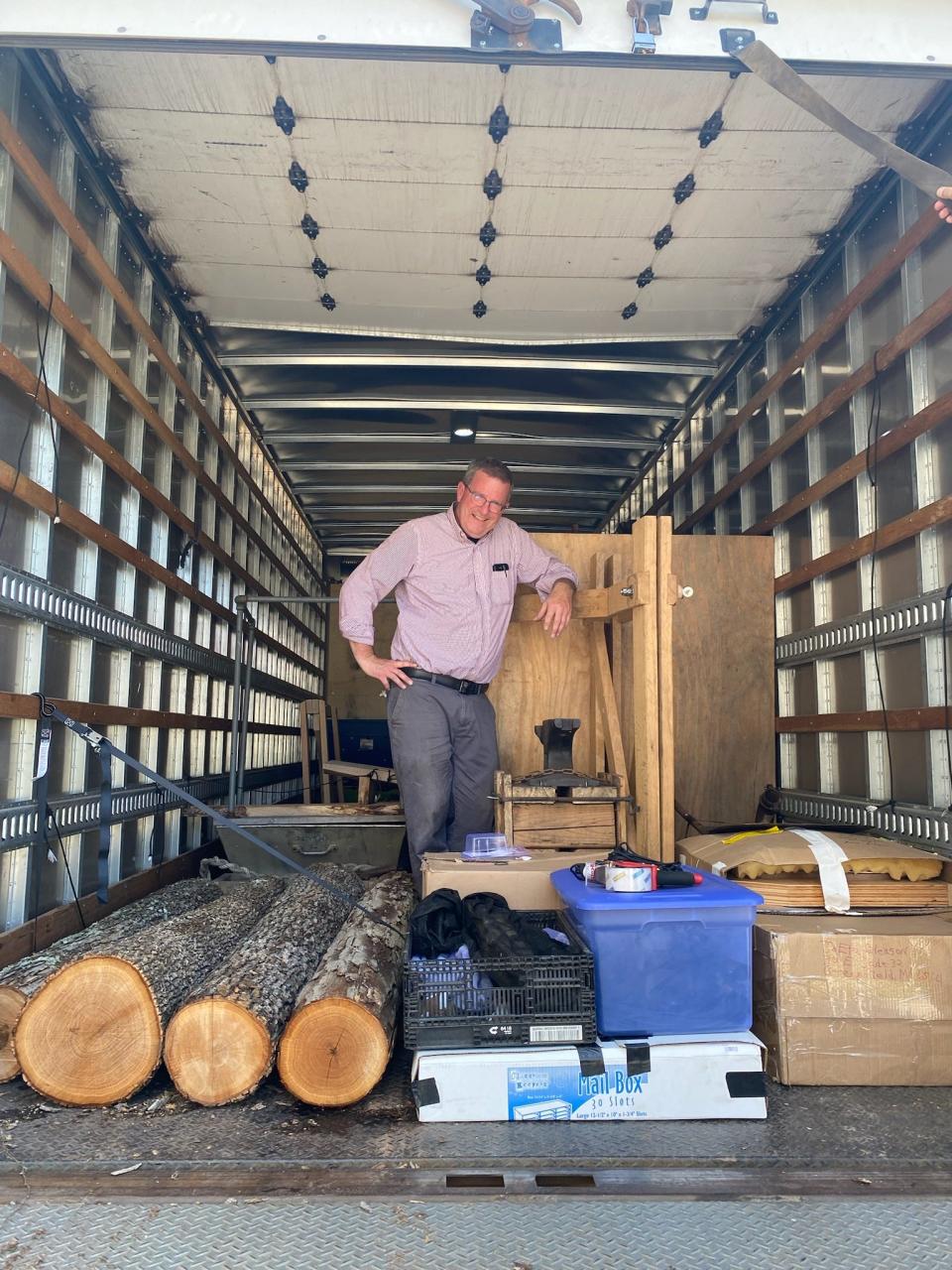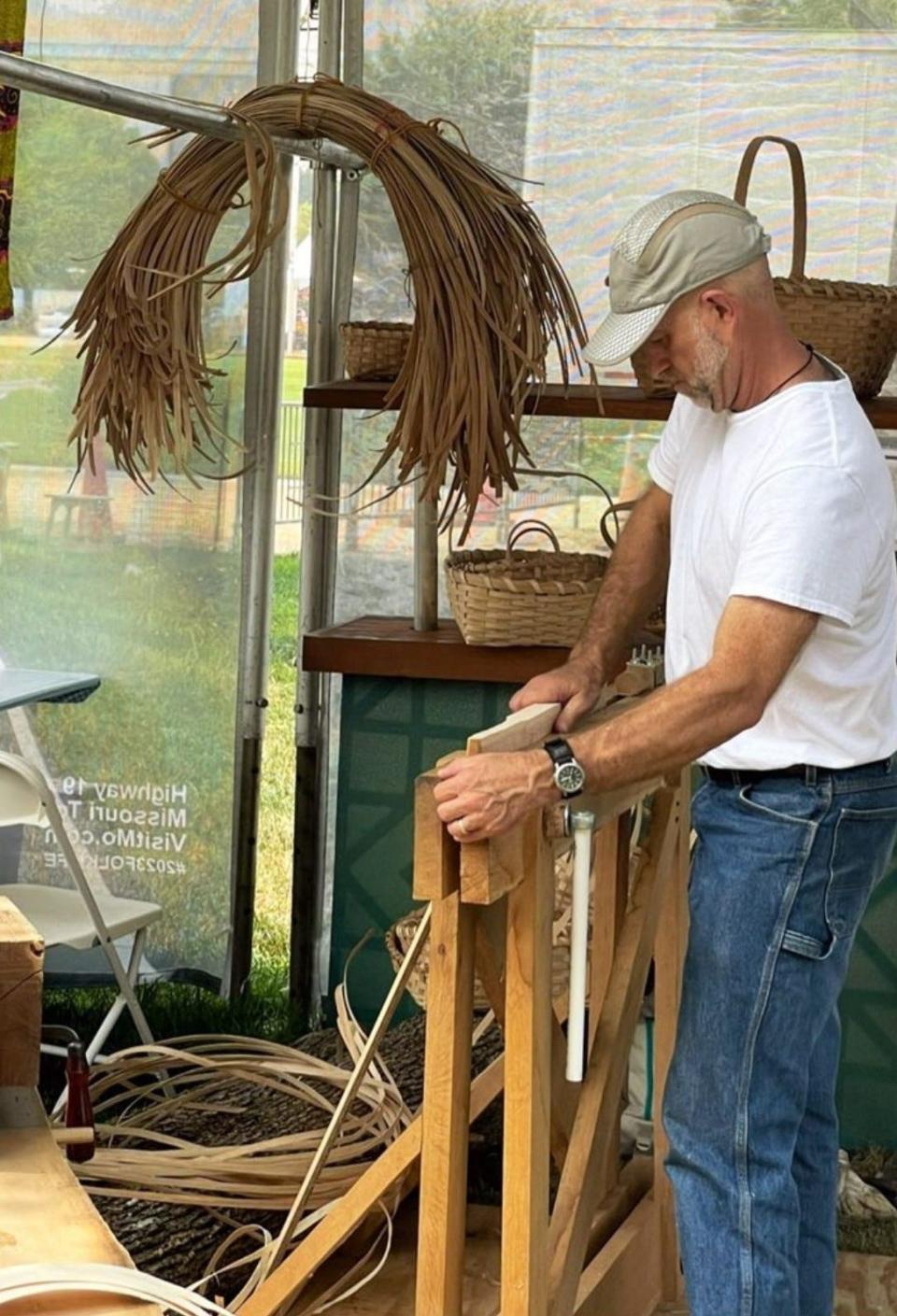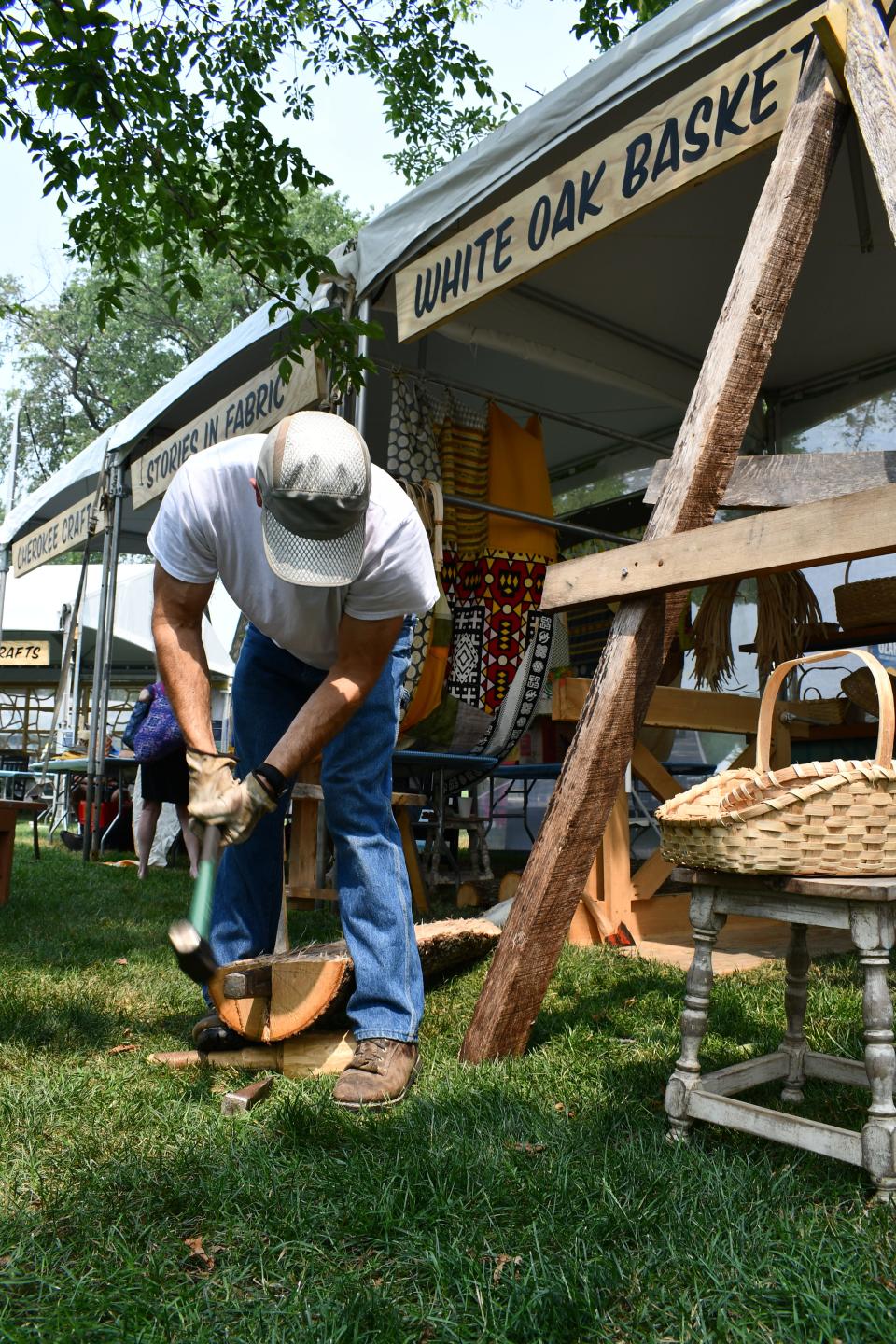White oak from Ozarks travels 1,000 miles to National Mall for Smithsonian Folklife Festival
White oak logs grown in the Ozarks traveled nearly 1,000 miles in the back of a U-Haul to Washington D.C. last week to be used for live basketmaking demonstrations at the annual Smithsonian Folklife Festival.
For the first time in the Smithsonian Folklife Festival's 56-year history, its focus is on the Ozarks, highlighting the diverse history and contemporary lifestyle of the region through workshops, demonstrations, performances and narrative sessions.
Held on the National Mall in Washington D.C., this year's festival started June 28 and will continue through Sunday, July 9, with one day off on Wednesday. Missouri State University is the festival's primary partner for this year.
One of the festival's daily demonstrations is white oak basketmaking, hosted by Aaron Holsapple of Jefferson City and Billy Owens of Jenkins, Missouri. Each day of the festival, from 11 a.m. to 5 p.m., Holsapple and Owens pull out their split knives and get to work, weaving thinly-sliced white oak and answering questions from the hundreds of tourists who visit the festival.
More: Annual Smithsonian Folklife Festival highlights Ozarks. Here's how to participate from home
The wood Holsapple and Owens are using to make baskets at the festival was harvested from two or three trees in Shannon and Dent Counties, Holsapple said. The trees were then cut into four logs, about six feet long and 10 inches in diameter.
After cutting the trees down, Holsapple transported the logs to Missouri State University, where Thomas Peters, dean of libraries, stored them on the northward side of the Duane G. Meyer Library. To ensure the wood stayed damp, Peters had to hose down the logs with water at least twice a day. When the time came, Peters loaded the logs up in a U-Haul for his three-day, cross-country road trip.

A key aspect of successful white oak basketmaking is ensuring that the lumber being used is green and pliable, Holsapple said. Depending on the weather, this may mean the wood needs to be hosed down with water or just kept under shade.
Keeping the wood damp during the road trip was important. Peters said he purchased a spray bottle from Walmart that he used to spritz the logs each time he made a pit stop.
"The things they don't teach you at library school," Peters said with laugh.

Now on the National Mall, festival employees and volunteers are helping keep the wood in the shade and slightly damp for optimal use.
Holsapple said its possible to make an average-sized white oak basket in five or six hours (from log to finished basket), but he anticipates only making one basket about every three days, due to the number of times he stops work to answer questions from passerby.
During the day, Holsapple is a forester with the Missouri Department of Conservation but enjoys making white oak baskets in his free time. In 2018, Holsapple apprenticed with seasoned basketmakers Joe and Alice Dudenhoeffer in Linn, Missouri for six months under the University of Missouri's Missouri Folk Arts Program.
Holsapple said he's demonstrated how to make white oak baskets at the state capitol in Jefferson City and at the University of Missouri before but nothing of comparable caliber to the Smithsonian Folklife Festival.
"The Smithsonian approached us and asked us to come out and basically make white oak baskets on the (National) Mall for the visitors and tourists to take in and enjoy," Holsapple said. "I almost didn't believe it because the Smithsonian, in my eyes, is such a revered institution for our country. It's quite an honor to be asked by them."

A second generation white oak basket maker, Billy Owens has created his own baskets, traveling the country and hosting basketmaking workshops since 1999, according to the Eureka Springs School of Arts. Owens learned how to make baskets from his father, who was a basketmaker at Silver Dollar City and founded Owens Oak Baskets, a family business that was in operation for about 30 years.
What makes white oak special?
Native to most of the Eastern United States, white oak is resilient, capable of growing in a wide variety of climates. In Missouri, it can be found in dry upland slopes and ledges, along with lowland valleys and ravines, according to the Missouri Botanical Garden.
What makes white oak ideal for basketmaking is its strength and durability.
"Even when you shave it down into very thin splits or pieces to make the baskets, it retains all that strength," Holsapple said.
This sturdiness is especially important for tasks around the farm, Holsapple added, like taking care of livestock, harvesting fruits and vegetables or bringing eggs in from the hen house.
Use of split knife unique to Ozarks

White oak basketmaking is not unique to the Ozarks region. The practice is also common in Appalachia, where white oaks are just as dominant. What makes the Ozarks technique of basketmaking special is the use of a split knife.
A split knife, essentially a large pocket knife, is used to slice thin pieces of wood, or weavers, for the individual pieces used to make the basket. Basketmaking with a split knife is thought to be quick and easy, according to Owen Rein, a basketmaker from Mountain View, Arkansas.
"This Ozark method of using a split knife to take off the slices off the top, that is a true Ozarks tradition that was born right there in Arkansas and Missouri," Holsapple said.
It is presumed that early settlers from Europe, New England and Appalachia brought the tradition of white oak basketmaking to the Ozarks, according to the Encyclopedia of Arkansas. It was in Missouri and Arkansas where the split knife began to be used.
Even as the use of handmade baskets went nearly obsolete because of industrialization, basketmaking was still taught throughout the Ozarks. The Encyclopedia of Arkansas states that after the Civil War, children were taught basketmaking skills as it was believed these techniques were still needed for agricultural purposes.
Then, in the 1920s and 1930s, following World War I, a newfound sense of patriotism spread across the United States and an interest in colonial and Native American history was newly appreciated. The once neglected skill of basketmaking was revived.
Countless other demonstrations of techniques and art forms unique to the Ozarks will be ongoing through the festival. A full festival schedule is available on the Smithsonian Folklife Festival website at festival.si.edu/schedule. Many of the programs are livestreamed so folks at home can tune in, even if they aren't in Washington D.C.
This article originally appeared on Springfield News-Leader: Ozarks' white oak travels 1,000 miles for Smithsonian Folklife Festival

